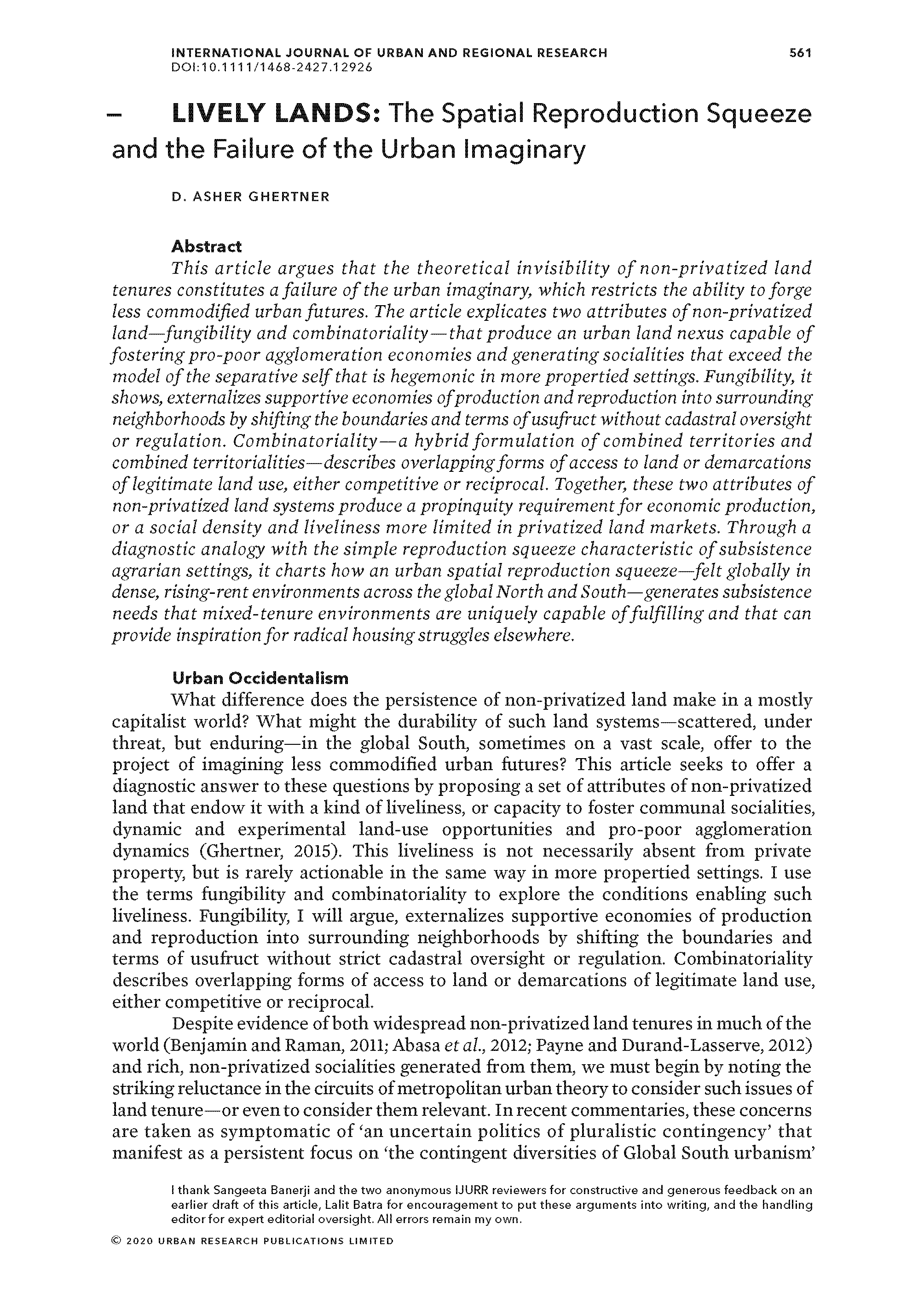International Journal of Urban and Regional Research
Authored by #UnequalCities Network member Asher Ghertner
Abstract: This article argues that the theoretical invisibility of non‐privatized land tenures constitutes a failure of the urban imaginary, which restricts the ability to forge less commodified urban futures. The article explicates two attributes of non‐privatized land—fungibility and combinatoriality —that produce an urban land nexus capable of fostering pro‐poor agglomeration economies and generating socialities that exceed the model of the separative self that is hegemonic in more propertied settings. Fungibility, it shows, externalizes supportive economies of production and reproduction into surrounding neighborhoods by shifting the boundaries and terms of usufruct without cadastral oversight or regulation. Combinatoriality—a hybrid formulation of combined territories and combined territorialities—describes overlapping forms of access to land or demarcations of legitimate land use, either competitive or reciprocal. Together, these two attributes of non‐privatized land systems produce a propinquity requirement for economic production, or a social density and liveliness more limited in privatized land markets. Through a diagnostic analogy with the simple reproduction squeeze characteristic of subsistence agrarian settings, it charts how an urban spatial reproduction squeeze—felt globally in dense, rising‐rent environments across the global North and South—generates subsistence needs that mixed‐tenure environments are uniquely capable of fulfilling and that can provide inspiration for radical housing struggles elsewhere.
Download >> Lively Lands: The Spatial Reproduction Squeeze and the Failure of the Urban Imaginary


